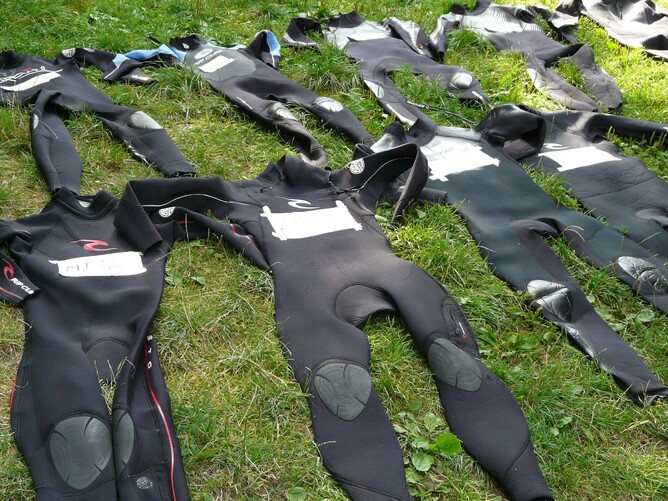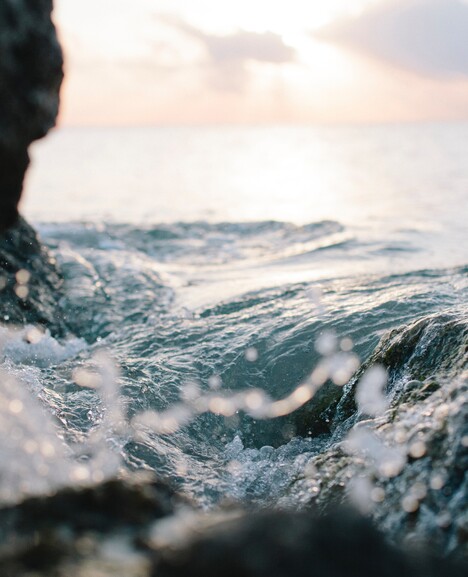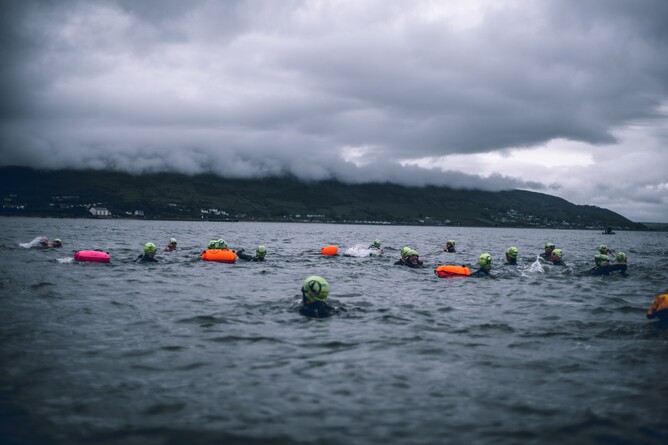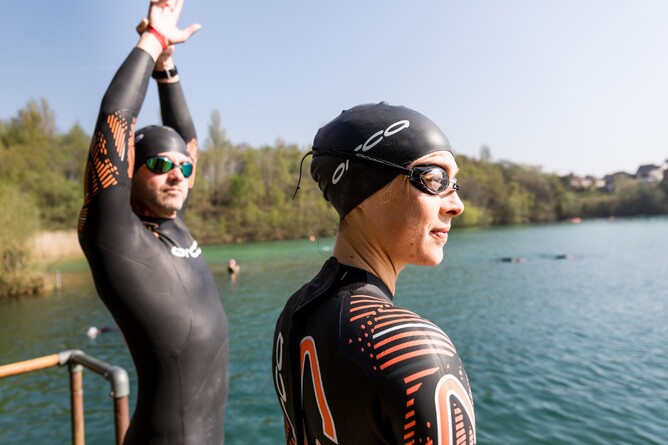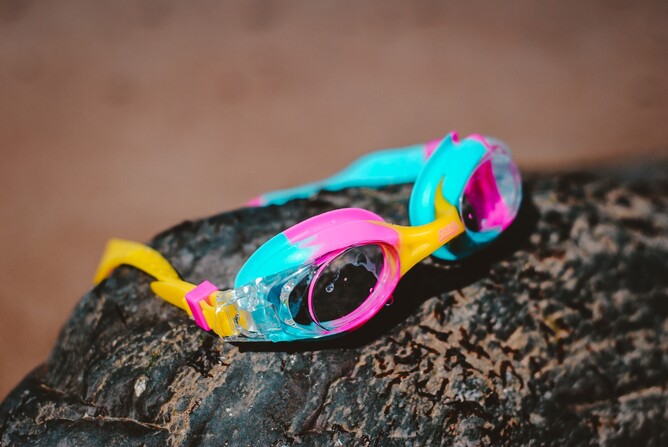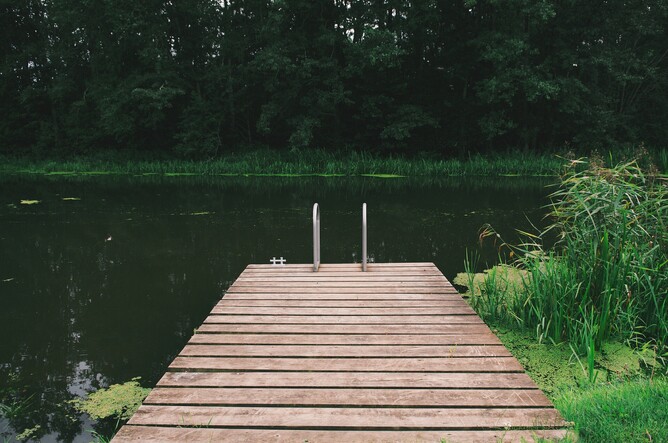What is wild swimming?
Last updated: 13 July 2023
Previously: 20 July 2021
Wild swimming (also known as open water swimming) is essentially any swimming undertaken in an open body of water - a river, lake, pool or sea.
Wild swimming or open water swimming has become more popular in the last year or so. Certainly for some, it’s been an emotional life-saver during the pandemic when we’ve all felt the effects of lockdown and have looked for alternative outdoor activities when our gyms and recreational venues have been closed. The BBC’s Well World travel page ‘Why wild swimming is Britain’s new craze?’ charts the rise of its popularity and extols the benefits of wild swimming.
The Outdoor Swimming Society was formed in 2006 and started with 300 members. Now, the society has a membership of over 100,000 (the society grew by 36% in 2020) and supports local groups around the UK to promote wild swimming, share resources and hold events. The society also has a useful web page - Outdoor Swimming Society - is it legal? The rules in England and Wales differ to those in Scotland so it’s a good idea to check before you plan your trip as part of your stay in one of our North Wales cottages.
For those of us new to the activity, it might be a good idea to limit our toes’ exposure to the cold by swimming in the spring and summer months - those hardy enough to attempt wild swimming all year round may have a bit more experience under their wetsuits.
What are the benefits of wild swimming?
Those that are hooked on wild swimming (pardon the pun) speak of the mental health benefits; you can’t help but fully immerse yourself in the experience and being surrounded by nature encourages a feeling of wellbeing.
Swimming, as we know, is a non-weight bearing form of exercise so is an excellent way of staying in shape and can be enjoyed by all ages.
Open water swimmers talk of the need to focus only on breathing - since there is the initial shock of hitting the cold water. This, in turn, has its own psychological benefits - a feeling of calmness and empowerment takes over. The sense of being at one with nature and living ‘in the moment’ is also prevalent. Who wouldn’t want a massive rush of endorphins to make them feel alive and mindful at the same time?
There’s also growing evidence that wild or open water swimming can aid in the treatment of anxiety and depression - the theory being that the physiological stressor activated by the shock of being in cold water can counteract the stress induced by depression and anxiety.
And post swim (as you reflect in one of our North Wales cottages), the emotional benefits keep giving; there’s a sense of relaxation and serenity that stays with you throughout your day.
So, all things considered, whether it’s just a plunge in a pool, a few lengths in a lagoon or a swim in the sea, wild swimming is here to stay and its following is growing.
What are we all waiting for - let’s go wild swimming!
How to wild swim, safely
First and foremost, if you are taking up a new exercise regime and have a health condition, it’s always wise to consult your doctor.
Always follow safety advice and take the following precautions when embarking on your wild swimming adventure:
- Check the water flow - if the current is too strong for your return journey upstream don’t venture in.
- Check the water depth. Avoid jumping or diving in - rock, sand and rubbish may have deposited on the river or lake bed so even if you’re familiar with the location, conditions may have changed.
- Wear a wetsuit and acclimatise slowly to the conditions (there’s a useful guide on the Outdoor Swimmer magazine ‘Coping with the cold’. Hypothermia comes on gradually - the first sign might be a slightly groggy feeling, even before the teeth start chattering. Be mindful of how your body is feeling.
- If your children are with you, they’ll need constant supervision.
- Plan ahead. If you need to get out of the water quickly, you’ll need to be familiar with exit points, safe river banks etc.
- Wise up on your algae - especially in late summer. Some will cause eye irritation, sickness and skin rashes.
- Bring a friend. Don’t swim in isolation.
- Reeds will rope you in. Avoid areas with dense reeds and weeds and if you find yourself in such an area, don’t thrash about - use your arms to swim out of the danger zone.
- Make sure you’re properly hydrated before you go in the water. This should avoid muscular cramps but always ensure you’re not too far away from the shore, river bank or edge of the pool.
For more detail about the safety aspects of wild swimming, check out the Countryfile’s Wild swimming in Britain page.
The best places near Hafannedd for wild swimming
Our North Wales cottages are surrounded by beautiful landscapes and areas of outstanding beauty.
There are plenty of lakes, rivers and pools local to us in Snowdonia and in and around North Wales itself. The wildswimming.co.uk website lists a number of locations, but it’s worth checking for current information as some pools are no longer open to the public for open swimming.
In Snowdonia, there are plenty of locations to explore - and you can even fill up your thermos flask with hot chocolate from a nearby cafe before you swim! Check out the Visit Wales website for inspiration about wild swimming in the lakes of Snowdonia.
If swimming in the waterfalls of Snowdonia appeals to you, then visit the pages of What's on North Wales - Waterfalls of Snowdonia. The site describes each waterfall, how to access them and how close they are to car parks and facilities. All those listed can be walked to (obviously some walks are longer than others) and postcodes are included for satnav.
Of course, part of the wild swimming experience is sharing it with like-minded people. Check out Open Water Swimming UK’s page on Facebook for recommendations and information.
What do I wear for wild swimming?
There are plenty of websites to gauge the basic equipment you’ll need to enjoy wild swimming and do it safely.
To get started you’ll need the following as a minimum:
- A brightly coloured silicone hat
- Wetsuit
- Socks, boots and gloves
- Goggles
- Lubricant/anti-chafe stick
Most wild or open water swimming sites will provide you with an inventory - we think the swimming.org open water swimming kit guide is a useful place to start.
Looking after the environment - wild swim responsibly
Well, what’s stopping you from giving wild swimming in Wales a go? Make sure you have the right equipment, you know the area you’re swimming in and you’re not swimming alone.
One final point to make is to appreciate the environment and look after it - understanding where you are swimming and the eco-systems within it means that wild swimming can be appreciated by all for years to come.
There’s a comprehensive article on the subject here: Outdoor Swimming Society - Swimming Responsibly. The more we understand nature, the more we connect with it and the more we will adopt sustainability practices. The guide provides an overview of what we’re likely to come across during our wild swimming - from birds, fish, invertebrates and amphibians, to plants and algae. Familiarise yourself with environmental protocols (the guide includes a checklist) and follow the Outdoor Swimmers Code.
We look forward to seeing your toes in the water!

